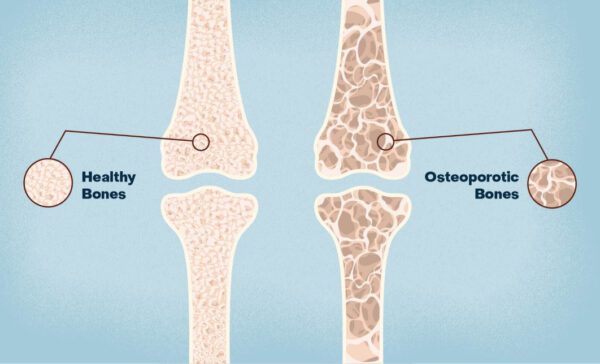Osteoporosis And The Spine
A healthy spine is essential, and taking care of the 33 bones – the vertebrae –...

Osteoporosis is a disease characterized by the weakening and deterioration of the skeleton, which includes the spine. Having osteoporosis makes the bones more fragile and susceptible to fractures, which can cause compression fractures of the vertebrae, leading to back pain. Osteoporosis is often referred to as a “silent disease” because it typically progresses without any noticeable symptoms until a fracture occurs.
And 1 in 5 male patients aged 50-59 undergoing spine surgery have osteoporosis.
Fractures from osteoporosis occur most often in the spine and happen an estimated 1.5 million times a year
Hospitalizations for fractures due to osteoporosis occur more frequently in women aged 55+ each year than breast cancer, heart attack, and stroke combined.
Women aged 65 and older and men aged 70 and older have a higher risk of developing osteoporosis and other bone health conditions. Caucasian and Asian women are at the highest risk.
You should also get your bone health assessed by your health care professional (using either a risk assessment tool or bone mineral density test) if you have two or more of the following risk factors:
Find Out if You are at Risk for Osteoporosis.
In collaboration with the International Osteoporosis Foundation, we invite you to learn more about your risk factors for osteoporosis. By clicking below, you will be redirected to a trusted partner’s website where you can check your Osteoporosis risk.
Osteoporosis can be both prevented and treated! The National Spine Health Foundation has many resources available to help you learn more about how to maintain strong, healthy bones.
NSHF has developed a number of tools and resources about the connection between spine and bone health and what you can do to diagnose and manage osteoporosis.
A healthy spine is essential, and taking care of the 33 bones – the vertebrae –...
Description: Are you at risk for Osteoporosis? Osteoporosis, commonly dubbed the “silent disease,” often escapes notice...
Panelists: Dr. Thomas Schuler, MDFounder, Virginia Spine Institute Dr. John Dimar, MDSpine SurgeonNorton Leatherman Spine, Louisville,...
Nutrition plays a crucial role in supporting the wellness of your bones including your vertebrae, but...
Panelists: Dr. Thomas Schuler, MDFounder, Virginia Spine Institute Dr. Venu Nemani, MD, PHDSpine SurgeonVirginia Mason Medical...
We’re here to help! Reach out to the NSHF team and have your bone health questions answered.
Find out if you’re at risk for osteoporosis and other bone conditions.
Notifications